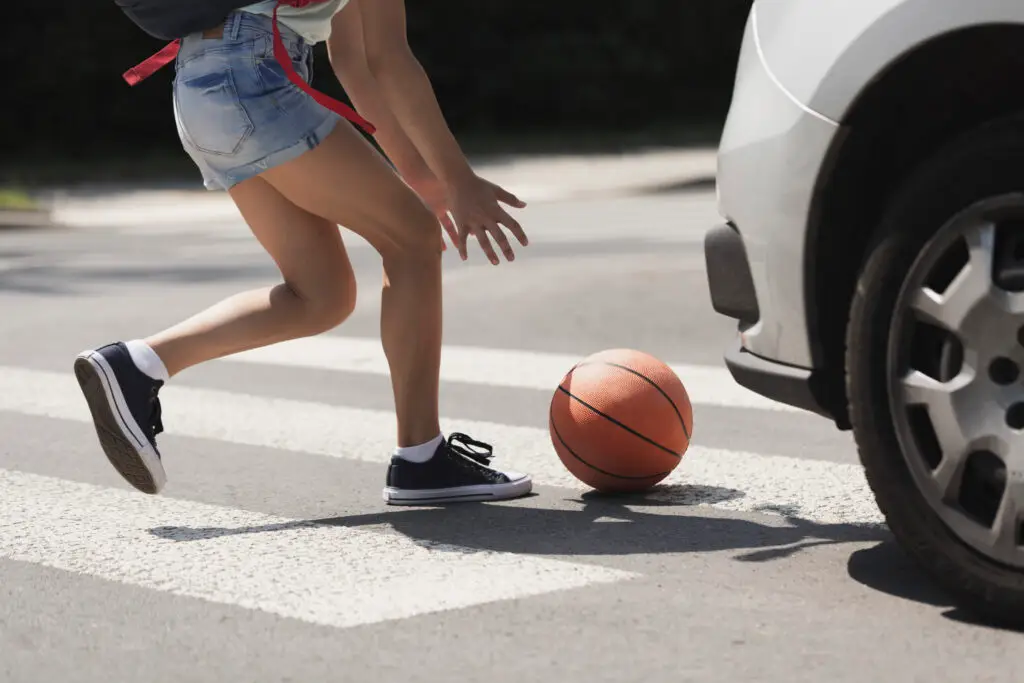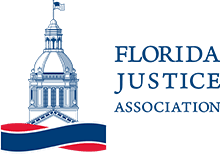What Are the Main Causes of Pedestrian Accidents in Florida?
Pedestrian accidents are a significant concern in Florida, as the state consistently ranks among the most dangerous for pedestrians in the United States. With its bustling cities, high traffic volumes, and a growing number of walkers and cyclists, the risk of collisions involving pedestrians remains alarmingly high. Understanding the primary causes of pedestrian accidents is essential for improving safety and reducing the number of injuries and fatalities.
If you have been involved in a pedestrian accident in Florida, Fran Haasch Law Group Accident & Injury Lawyers is here to help. With years of experience handling personal injury cases, our dedicated team understands the complexities of pedestrian accident claims and works tirelessly to protect victims’ rights.
We offer compassionate guidance, thorough investigation, and aggressive representation to ensure clients receive the compensation they deserve for medical expenses, lost wages, and emotional distress. Trust Fran Haasch Law Group Accident & Injury Lawyers to stand by your side and fight for justice in your pedestrian accident case. Call today for a free consultation.

How Many Pedestrian Accidents Happen Each Year in Florida?
Florida consistently ranks as one of the most dangerous states for pedestrians in the United States. On average, thousands of pedestrian accidents occur annually, with many resulting in severe injuries or fatalities.
Recent statistics reveal that Florida sees over 9,000 pedestrian-related crashes each year, often influenced by factors such as dense traffic flow, distracted driving, and urban design. These alarming numbers highlight the critical need for increased awareness and improved safety measures to protect pedestrians.
What Are the Most Common Causes of Pedestrian Accidents in Florida?
Pedestrian injuries in Florida are often the result of a combination of factors, ranging from driver behavior to environmental conditions. Understanding these common causes of pedestrian accidents is essential for identifying areas where preventative measures can be implemented.
- Distracted Driving: Drivers who are texting, using their phones, eating, or engaging in other distractions may fail to notice pedestrians in time to avoid a collision.
- Distracted Pedestrians: Similarly, pedestrians who are using their phones or headphones may be less aware of the surrounding traffic and potential hazards.
- Failure to Yield: Many accidents occur when motor vehicle drivers fail to yield the right of way to pedestrians at crosswalks or intersections, increasing risk of harm.
- Speeding: Excessive speed reduces reaction time and increases the severity of injuries in the event of a collision with a pedestrian.
- Poorly Designed Crosswalks: Crosswalks that are not clearly marked, lack adequate lighting, or are placed in unsafe locations contribute to pedestrian accidents.
- Impaired Driving or Drunk Driving: Drivers under the influence of drugs or alcohol often have reduced reaction times and impaired judgment, making them more likely to strike pedestrians.
- Jaywalking: Pedestrians crossing outside of marked crosswalks in oncoming traffic or disregarding traffic signals can also lead to accidents.
- Weather Conditions: Rain, fog, or other inclement weather conditions can reduce visibility for both drivers and pedestrians, increasing the chances of accidents.
- Lack of Sidewalks or Pedestrian Infrastructure: Areas without proper sidewalks or pedestrian pathways force individuals to walk on or near the road, creating hazardous situations.
Most of the common causes of pedestrian accidents can be avoided by following basic safety measures, such as using crosswalks, obeying traffic signs, and avoiding distractions while walking or driving.
What Provisions Are Made in Florida for Pedestrian Safety?
Florida has implemented several measures to improve safety and reduce pedestrian accidents. These include the construction of designated pedestrian crossings, especially in areas with heavy foot traffic, and the installation of flashing beacons to alert drivers when pedestrians are crossing. The state also mandates stricter enforcement of traffic laws, such as yielding the right-of-way to pedestrians in crosswalks.
Additionally, Florida promotes public awareness campaigns aimed at educating both drivers and pedestrians about safety practices. Infrastructure improvements, like adding sidewalks, pedestrian overpasses, and better lighting in poorly illuminated areas, further support pedestrian safety across the state.
Marked and Unmarked Crosswalks in Florida
Marked and unmarked crosswalks play a crucial role in ensuring pedestrian safety in Florida. A marked crosswalk is typically indicated with painted lines on the roadway, signaling to both drivers and pedestrians the designated area for crossing. These crosswalks are often placed at intersections or other high-traffic areas to enhance visibility and provide a clear indication of where pedestrians can cross safely.
Unmarked crosswalks, on the other hand, are those that exist implicitly at intersections but lack visible markings. While they are legally recognized in Florida, many drivers may not be aware of their existence, making them less secure than marked crosswalks. It is essential for both pedestrians and motorists to remain vigilant in these situations. Proper awareness and adherence to traffic laws surrounding crosswalks are key to reducing accidents and promoting safe road-sharing practices.
What Are the Legal Responsibilities of Drivers and Pedestrians?
Both drivers and pedestrians have legal obligations to ensure road safety and prevent accidents. Drivers are required to obey traffic laws, including speed limits, yielding to pedestrians at crosswalks, and avoiding distractions while driving. They must exercise extra caution in areas with high pedestrian activity, such as school zones or residential neighborhoods, and ensure they remain alert to their surroundings at all times. Distracted drivers and other negligent individuals are major causes of pedestrian accidents.
Pedestrians, on the other hand, are responsible for following pedestrian laws, such as crossing streets at designated crosswalks and obeying traffic signals. They should stay vigilant and avoid distractions, such as using mobile devices, when navigating roads. By understanding and adhering to these responsibilities, both parties can contribute to a safer and more organized flow of traffic, reducing the risk of accidents.

What Are the Most Common Pedestrian Accident Injuries?
Pedestrian accident injuries can occur in various situations and often result from collisions with vehicles or accidents while navigating public spaces. These wounds can range from minor cuts and bruises to more serious injuries, such as fractures, head trauma, or spinal injuries. Understanding the most common types of pedestrian injuries is crucial in highlighting safety concerns and emphasizing preventive measures for both pedestrians and drivers.
- Fractures: Broken bones are a common outcome of accidents involving pedestrians, especially in high-impact collisions with vehicles. Legs, arms, and ribs are particularly vulnerable.
- Head Trauma: Pedestrians often sustain head injuries, ranging from concussions to severe traumatic brain injuries (TBIs), due to falls or direct impact.
- Spinal Injuries: Collisions can lead to damage to the spinal cord, resulting in partial or complete paralysis in severe cases.
- Soft Tissue Injuries: These include bruises, sprains, and torn ligaments, often caused by falls or being struck by a vehicle.
- Internal Injuries: Blunt force trauma in an accident can cause damage to internal organs, which may not be immediately apparent but can have life-threatening consequences.
- Lacerations and Abrasions: Cuts and scrapes occur frequently, often leading to bleeding and potential infections if not treated properly.
- Psychological Trauma: Beyond physical injuries, pedestrians may suffer from long-term emotional distress, such as anxiety, depression, or post-traumatic stress disorder (PTSD), following an accident.
- Fatal Injuries: The most severe pedestrian accidents can result in death, leaving family and loved ones to cope with the devastating loss.
How Common Are Fatal Pedestrian Accidents in Florida?
Florida consistently ranks among the states with the highest number of pedestrian deaths in the United States. According to recent data, thousands of pedestrian accidents occur annually, many of which are fatal crashes.
Factors contributing to this alarming statistic include high population density, extensive urban road networks, and a prevalence of high-speed roadways. In urban areas, poor visibility, distracted driving, and jaywalking further exacerbate the issue. These statistics underscore the critical need for increased awareness, improved infrastructure, and stricter enforcement of traffic laws to protect pedestrians and reduce fatalities.
Can I Seek Compensation After a Pedestrian Accident In Florida?
If you have been involved in a pedestrian accident in Florida, you may be entitled to compensation for your injuries and related damages. Navigating the legal process can be complex, but understanding your rights and the steps involved is crucial to securing the compensation you deserve.
Filing a Personal Injury Claim in Florida
If you’ve been injured in a pedestrian accident caused by someone else’s negligence, filing a personal injury claim can help you recover compensation for your losses. The first step is to seek immediate medical attention, even if your injuries seem minor. Prompt medical care not only ensures your health and well-being but also provides essential documentation of your injuries, which can serve as critical evidence for your claim.
Once you’ve received medical treatment, it’s important to report the accident to law enforcement and obtain a copy of the police report. This report can provide details about the accident, including witness statements and the initial determination of the at-fault driver. Additionally, gather any evidence related to the incident, such as photographs of the scene, your injuries, and any damage to property.
Contacting an experienced personal injury attorney is also a key step. An attorney can guide you through the legal process, negotiate with insurance companies on your behalf, and work to ensure you receive fair compensation. Florida follows a comparative negligence system, meaning even if you are partially at fault for the accident, you may still be eligible to recover damages, though your compensation could be reduced accordingly.
Filing a Wrongful Death Claim in Florida
No matter the cause of pedestrian accidents, losing a loved in this way is a devastating experience. Filing a wrongful death claim in Florida can help surviving family members seek justice and financial relief. Under Florida law, a wrongful death claim can be filed when a person’s death is caused by driver negligence, recklessness, or wrongful act of another party. Typically, this type of claim must be filed by the personal representative of the deceased’s estate on behalf of the surviving family members, such as the spouse, children, or parents.
To successfully pursue a wrongful death claim, you must prove that the at-fault party’s actions directly caused the accident that led to the victim’s death. Evidence such as accident reports, witness statements, and surveillance footage can be critical in building a strong case. It is essential to consult with an experienced personal injury or wrongful death attorney who can guide you through the legal process, advocate on your behalf, and help you obtain compensation for damages such as funeral expenses, lost support, and emotional suffering.
Statute of Limitations
Under Florida law, the statute of limitations delineates the time frame within which a claim must be filed. For personal injury claims, the statute of limitations is typically two years from the date of the injury. This means that the injured party must initiate legal action within this period or risk losing the right to recover compensation.
If an accident in Florida leads to pedestrians killed, the surviving family members or representatives of the deceased have two years from the date of death to file a wrongful death lawsuit. It is crucial to act promptly to ensure compliance with these time limits, as failure to do so may result in the court dismissing the case. Consulting an attorney early in the process can help clarify deadlines and protect your legal rights.
Fran Haasch Law Group Accident & Injury Lawyers is Here to Help.
Fran Haasch Law Group Accident & Injury Lawyers has earned a reputation for providing dedicated and compassionate representation to clients involved in pedestrian accident cases. With years of experience in personal injury law, our team understands the complexities of these cases and strives to achieve the best possible outcome for every client.
We take a personalized approach, ensuring that your unique circumstances and needs are thoroughly addressed. From investigating the accident to negotiating with insurance companies or taking the case to trial, Fran Haasch Law Group Accident & Injury Lawyers is committed to fighting for justice and fair compensation for victims and their families.
If you or a loved one has been injured in a pedestrian accident, contact our offices for a free consultation. A skilled lawyer with experience in pedestrian accident claims will review the details of your case and let you know how we can help you recover some financial damages.




























